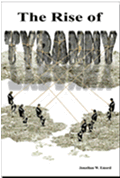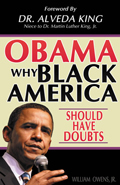By
Marilyn M. Barnewall
February 14, 2010
NewsWithViews.com
About 270 A.D, marriage was forbidden by Emperor Claudius II (known as Claudius the Cruel). He wanted men as soldiers and found married men far less likely to leave home and hearth willingly. He issued an order forbidding marriage.
The Bishop of Interamna, named Valentine, honored the institution of marriage and invited young lovers to come in secret to exchange vows.
Claudius II, living up to his nickname, was incensed that a mere bishop of Rome would ignore an Imperial Order. He had him arrested and imprisoned… he was eventually beheaded.
Valentine died on February 14th. Before he died he left a note for his jailer’s daughter, signed “From your Valentine.” The two had become close friends during his imprisonment.
Flowers became associated with Valentine’s name because those whom he joined together came to the prison on their anniversaries and threw bouquets into his prison cell.
That is the historical Christian explanation of this holiday.
There is another theory. According to this opinion, Valentine’s Day began in Rome. February 14 was the day on which Juno, Queen of Roman Gods and Goddesses was honored. In Rome, Juno was also known as the Goddess of women and marriage.
Unfortunately, the second theory does not explain how the day became known as St. Valentine’s Day. Maybe Christians had a stronger lobby in those days.
America has taken the romance that abounds on this holiday and turned it into a good, old- fashioned capitalist day of celebration. Cupid, the pudgy, winged, icon has been projected to produce over $14 billion in much-needed consumer spending in 2010.
According to the National Retail Foundation (NRF), the average all-American male spent $125.95 on Valentine’s Day 2003 on his significant other (including his spouse). Still inexperienced with the true meaning of “equality,” the average woman spent only $38.22 on the hero of her dreams that year.
In 2010,
estimates by NRF indicate men intend to spend $135.35 on the femme fatales
in their lives, but women will be less generous, spending $72.28. Women,
it seems, are learning to give as good as they get. The 2003 statistics
show men spending better than three times on their feminine love interests
than was spent on them. By 2010, that number has fallen to less than 200
percent.
Progress is progress.
Women shop earlier and men spend more, according to the International Mass Retailers Association (IMRA). It is three times more likely women will receive flowers and jewelry from men than it is men will receive them from women. The number of men and women who send Valentine’s Day greeting cards is almost equal. As for married people, more than 80 percent of Americans give spouses or significant others Valentine’s Day greeting cards and close to 60 percent have an evening out to celebrate this love-honoring holiday.
Close to 30 percent of women will give candy, only 22 percent of men. Only about 10 percent of women give flowers, while bouquets are the choice of 33 percent of American men. Slightly less than 10 percent of men give jewelry while only 3.2 percent of women do so.
IMRA also finds that most men shop at florists and specialty stores. Women prefer discount stores. Good grief! Women are not only less generous, we’re cheap, too?
In 2007 (the latest year for available actual statistics rather than estimates), the average person spent $102.50 on his/her significant other. In 2010, NRA estimates the average person will spend $103.00 on traditional Valentine’s Day merchandise.
Age, it seems, has something to do with what people spend on special “someones.” Those aged 25-34 spent $90, 35-54 spent over $60, and those over 55 spent a little over $40 (2006 statistics). The message seems pretty clear. Either love wanes with age, or common sense becomes more prevalent while the need to outwardly display one’s affections diminishes.
This year in fact, IBISWorld, the research arm of International Book Import Service (IBIS), suggests Valentine’s Day spending will shift from retailers to restaurants. There are two reasons: 1) Because in 2010 the holiday is on Sunday; and, 2) because President’s Day is on the Monday following Valentine’s Day. The resultant three-day weekend means dining out will increase by 8.2 percent. You may need a reservation. Sales of greeting cards and clothing are both expected to rise 1.8 percent.
The same study, however, forecasts a downward slide for candy, jewelry and flower sales. “Many retailers will see Valentine’s Day as an opportunity to kick start the New Year, but the unemployment rate and continued uncertainty of the economic recovery will hamper growth and expansion,” says Toone van Beeck, senior analyst with IBISWorld. “This combined with the fact that the holiday is a discretionary purchase, we expect customers to remain on the shopping sidelines for the second consecutive year.”
Statistics from candyusa.com validates von Beeck’s comments. Confectionery sales posted a 9.4 percent decline for the 2009 Valentine’s Day selling season, which have traditionally been fourth after holiday candy sales for Halloween, Easter and Thanksgiving.
“Seasonal sales are always more impacted by a negative economic climate than everyday sales and the U.S. consumer has had their share of negative economic news over the past year. The double whammy of Valentine’s Day falling on a Saturday (2009) led to the large decline.”
Not even love, it seems, escapes the irresponsibility of ineffective, misguided government policies and the Federal Reserve System that seems intent upon bankrupting the nation.
Todd Hale, senior vice president, Consumer & Shopper Insights at The Nielsen Company, said of 2009, “As reports of job losses mount, you can bet that U.S. consumers will be challenged this Valentine’s Day. Look for more at-home celebrations and shifts to value-oriented traditional gifts as consumers look for ways to celebrate the holiday in these economically-challenged times.”
Normally, Valentine’s Day sees more flower sales than any other day of the year, including Easter and Mother’s Day. So says the Society of American Florists.
Most of us have learned that love has nothing to do with dollar signs. It is, however, one of the most gratifying feelings in the world to give to those for whom we care. It has probably always been so. It matters not whether it’s a piece of candy, a single flower, a hot dog – or a special telephone call or an affectionate glance that says “you’re special.” Relative to Valentine’s Day, they all count.
Many traditions have evolved over the years regarding this day. For example, according to Scottish tradition, red roses mean, “I love you.” Yellow roses mean “I love you but do not know if you love me.” White roses say “our love is pure,” while orange blossoms indicate everlasting love. Gardenias imply secret love while gladiolas say “you have pierced my heart.”
|
Subscribe to the NewsWithViews Daily News Alerts! |
The Scots also say that the first man’s name an unwed woman hears on Valentine’s Day will be the name of the man she loves and marries. They also say if you see a flock of ducks, you will have a happy, peaceful marriage. Those women who see a robin on this day of love marry crime fighters.
I should have headed for a duck blind on Valentine’s Day. I knew that darned robin was trouble.
� 2010 Marilyn M. Barnewall - All Rights Reserved
Sign Up For Free E-Mail Alerts
Marilyn Barnewall received her graduate degree in Banking from the University of Colorado Graduate School of Business in 1978. She has authored seven non-fiction books about banking, two are listed at Oxford and Cambridge University libraries in Great Britain. Her current book, When the Swan’s Neck Breaks, details the banking problems she foresaw in 2006. Of the 24 predictions made in the book, 22 have happened. It is fiction but readers refer to it as docu-fiction.
Barnewall was named one of America's top 100 businesswomen in the book, What It Takes (Dolphin/Doubleday; Gardenswartz and Roe) and was one of the founders of the Committee of 200, the official organization of America's top 200 businesswomen. She can be found in Who's:Who in America (2005-08), Who's Who of American Women (2006-08), Who's Who in Finance and Business (2006-08), and Who's Who in the World (2008).
Web site:
E-Mail: marilynmacg@juno.com
















